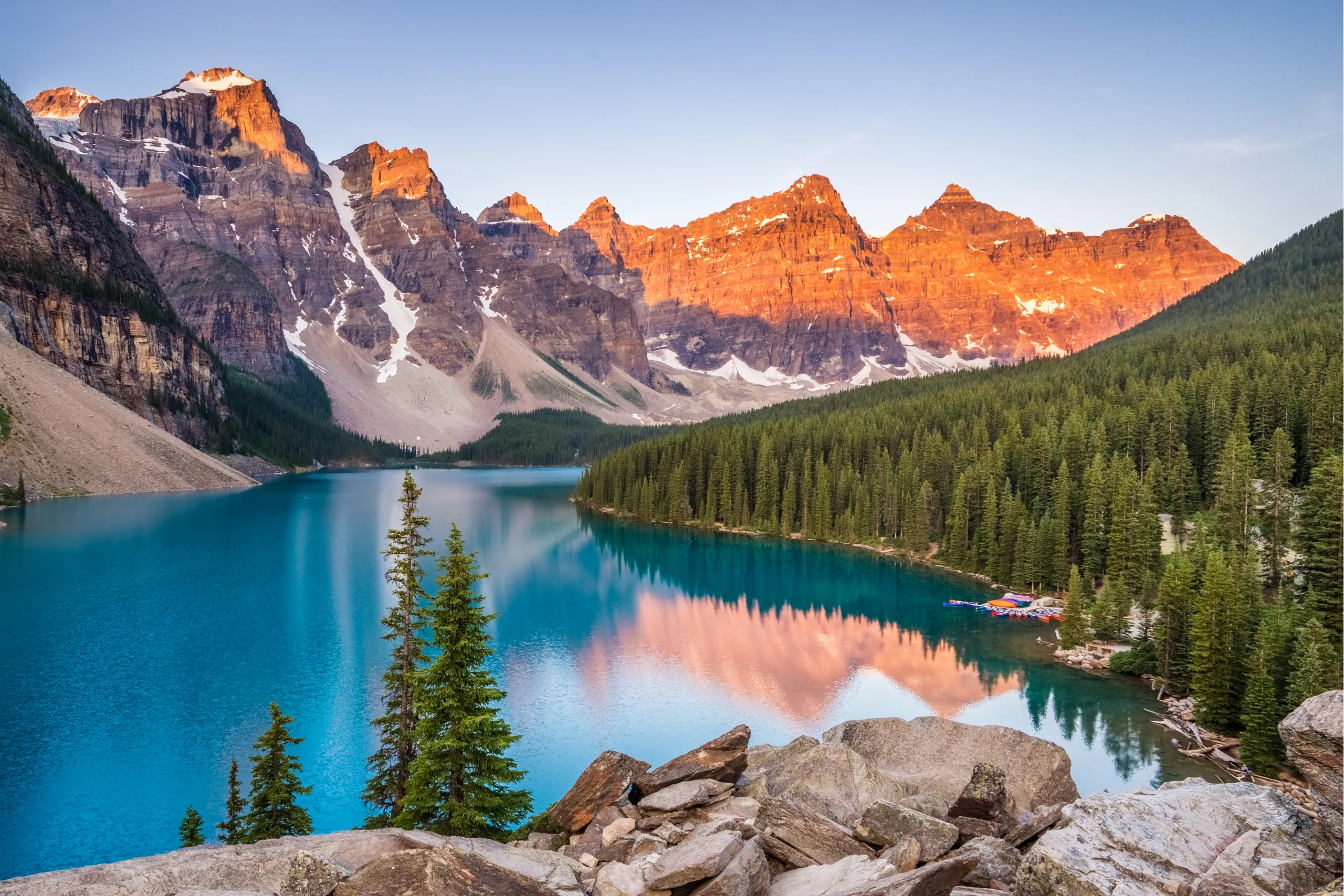Nestled in the heart of the Canadian Rockies, Banff National Park is one of Canada’s premier destinations, offering an awe-inspiring landscape that captivates adventurers, nature lovers, and photographers alike. This iconic park, established in 1885, is Canada’s first national park and a UNESCO World Heritage Site.
Its remarkable scenery, wildlife, and cultural history make it a must-visit destination, attracting millions of visitors annually from across the globe.
Banff National Park spans an impressive 6,641 square kilometers, making it one of the largest protected wilderness areas in North America. Located in the province of Alberta, the park is easily accessible from the town of Banff and nearby Calgary, which is only 126 kilometers away.
Read : Stunning Northern Lights Lit Up Skies Across US, UK, Canada, and Germany
Bordered by Jasper National Park to the north and Kootenay National Park to the south, Banff forms part of a vast interconnected network of protected areas within the Canadian Rockies, ensuring the preservation of its unique ecosystem.
A History Rooted in Exploration
The history of Banff National Park is deeply intertwined with the railway and the early exploration of Canada’s rugged terrain. The Canadian Pacific Railway played a pivotal role in the park’s development, particularly with the discovery of the famous hot springs near Sulphur Mountain in the early 1880s.
In response to this discovery, the government of Canada designated a small area around the springs as a public reserve, which later expanded into Banff National Park.
Read : Banff National Park: Canada’s Crown Jewel of Natural Splendor
Over the years, the park has grown in size and reputation, becoming a symbol of Canada’s commitment to conservation and wilderness preservation. Its establishment marked the beginning of Canada’s national park system, which today includes over 40 parks and reserves.
Banff’s rich history is celebrated through its heritage sites and museums, where visitors can learn about the park’s early explorers, Indigenous peoples, and the role of the railway in shaping the region.
The Spectacular Scenery of Banff National Park
One of the main draws of Banff National Park is its breathtaking scenery, which ranges from snow-capped peaks to crystal-clear lakes, expansive glaciers, dense forests, and sweeping alpine meadows. The park’s diverse landscapes offer an ever-changing backdrop for outdoor enthusiasts and nature photographers.
1. Lake Louise

Perhaps the most iconic and photographed location within Banff National Park is Lake Louise, renowned for its turquoise waters and stunning mountainous backdrop. The lake’s vibrant color, caused by the rock flour deposited by melting glaciers, is a sight to behold. Visitors flock to Lake Louise to hike the surrounding trails, canoe on the lake, or simply take in the serene beauty of the landscape. In winter, the lake transforms into a magical wonderland, where activities like ice skating and snowshoeing are popular.
2. Moraine Lake

Not far from Lake Louise is Moraine Lake, another glacier-fed jewel nestled in the Valley of the Ten Peaks. The striking blue waters of Moraine Lake, surrounded by towering mountains, create a postcard-perfect scene that has graced numerous travel brochures and social media feeds. Hiking around the lake or canoeing on its waters is a popular activity for those looking to experience the tranquility of the area.
3. Bow Lake and Peyto Lake
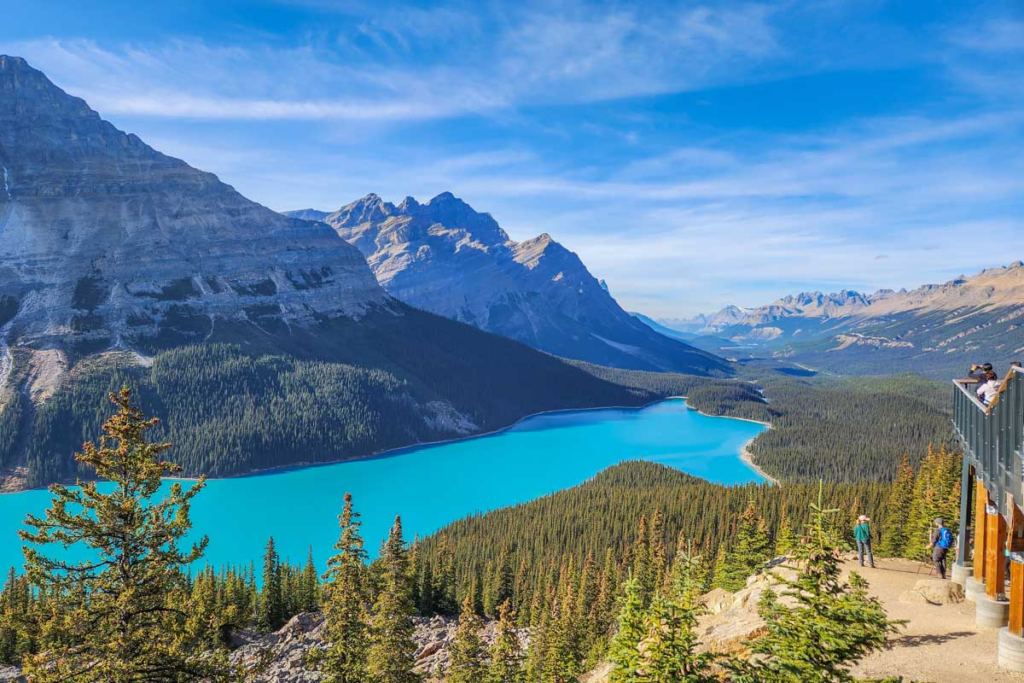
Further along the Icefields Parkway, Bow Lake and Peyto Lake offer even more jaw-dropping views of the park’s alpine scenery. Peyto Lake, in particular, is known for its unique wolf-head shape and vibrant blue color, making it a must-see stop for photographers. Both lakes are excellent starting points for hiking adventures, with nearby trails offering panoramic views of the surrounding wilderness.
4. The Icefields Parkway

The Icefields Parkway, a scenic highway that stretches 230 kilometers from Lake Louise to Jasper, is often considered one of the most beautiful drives in the world. This route takes travelers through the heart of the Canadian Rockies, offering unparalleled views of snow-covered peaks, glaciers, waterfalls, and wildlife. Highlights along the parkway include the Columbia Icefield, Crowfoot Glacier, and Athabasca Falls. The Columbia Icefield, one of the largest ice fields in North America, is a particularly popular destination, where visitors can embark on guided glacier tours and ice walks.
Wildlife: A Living Showcase of Biodiversity
Banff National Park is home to an incredible array of wildlife, making it a top destination for animal enthusiasts and wildlife photographers. The park’s varied habitats, from alpine meadows to dense forests and wetlands, support a rich diversity of species, including some of Canada’s most iconic animals.
1. Grizzly and Black Bears

Banff is one of the few places in North America where visitors can witness both grizzly and black bears in their natural habitat. While sightings of these magnificent creatures are rare, especially during the summer months, they are more frequently observed during the spring and fall when bears are foraging for food. The park’s efforts in managing human-wildlife interactions ensure the safety of both visitors and animals, with bear-proof bins and signage reminding tourists of safe wildlife viewing practices.
2. Elk, Moose, and Deer

Large ungulates like elk, moose, and deer are common sights in the park. Elk, in particular, are often spotted grazing in open meadows or near the town of Banff. Moose, the largest members of the deer family, can be found in wetlands and along the park’s rivers and lakes. Visitors should be cautious when observing these animals, as they can be unpredictable, especially during mating season.
3. Wolves, Cougars, and Coyotes
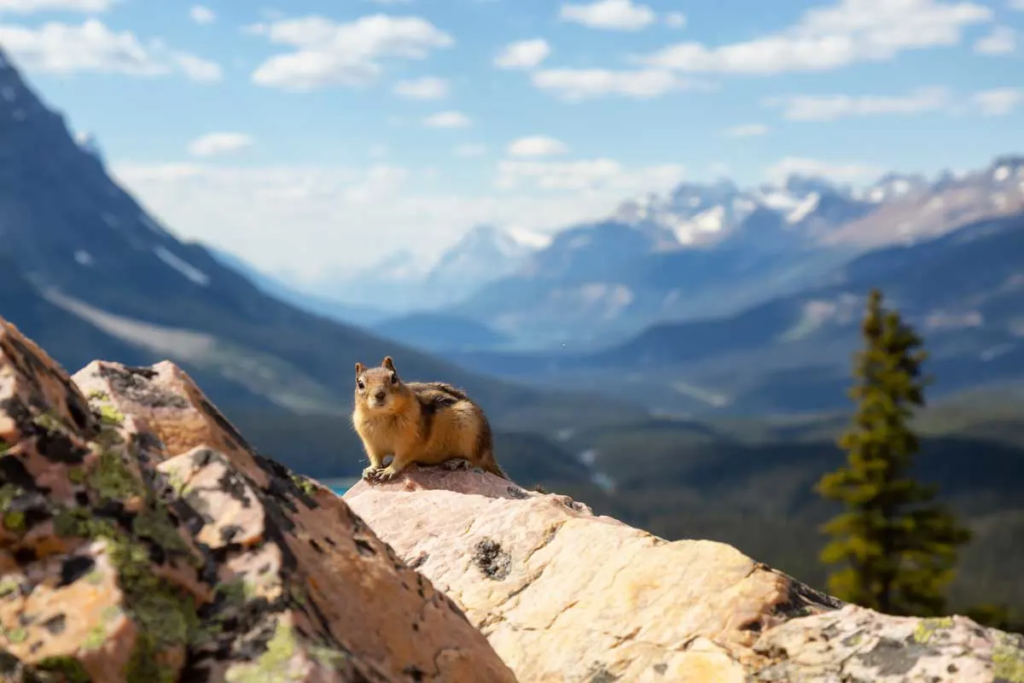
The elusive predators of Banff, such as wolves, cougars, and coyotes, are rarely seen but play a crucial role in maintaining the park’s ecological balance. Wolves, in particular, are vital for controlling prey populations, and their presence is a sign of a healthy ecosystem. Coyotes are more commonly spotted in open areas, while cougars are known to roam the dense forests, though sightings are exceedingly rare.
4. Birdwatching in Banff

Birdwatchers will find plenty to admire in Banff, as the park is home to over 260 species of birds. From the majestic bald eagle to the colorful western tanager, the park’s diverse birdlife can be observed year-round. In spring and summer, the wetlands and rivers attract migratory species, while in winter, hardy species like the great horned owl and gray jay can be spotted in the park’s forests.
Outdoor Activities for Every Season
Banff National Park is a year-round destination that offers an abundance of outdoor activities for every type of traveler. Whether you’re an adrenaline junkie seeking adventure or someone who prefers a leisurely stroll through nature, Banff has something to offer.
1. Hiking and Trekking
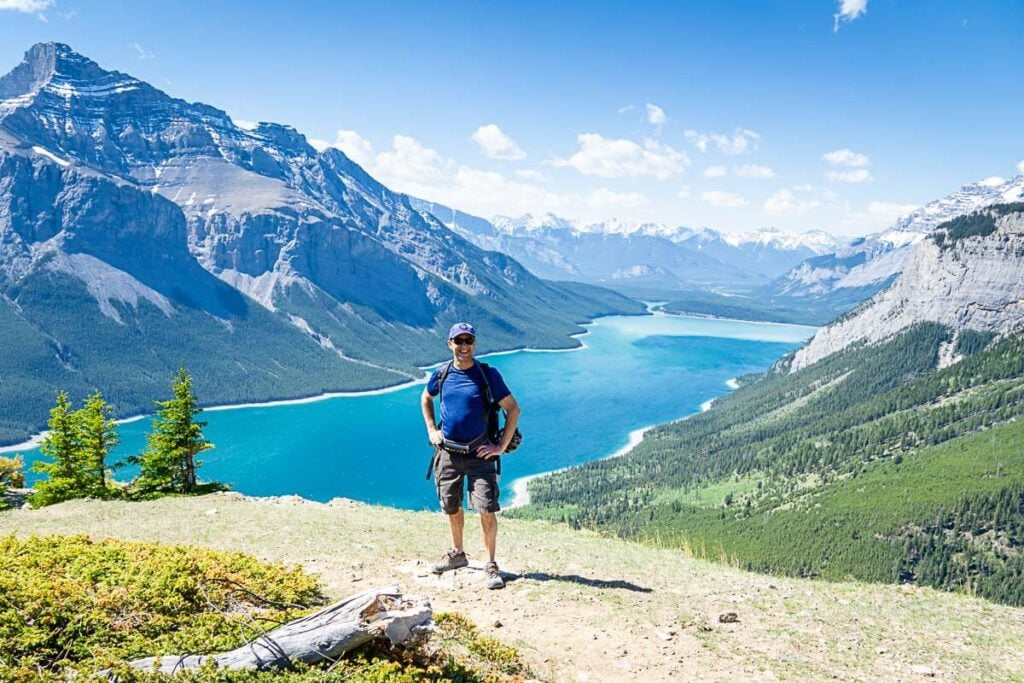
Hiking is one of the most popular activities in Banff, with over 1,600 kilometers of well-maintained trails to explore. These trails vary in difficulty, from easy walks around lakes to challenging multi-day treks through rugged backcountry terrain. Some of the most popular hikes include the Plain of Six Glaciers Trail, which offers breathtaking views of Lake Louise and the surrounding mountains, and the Larch Valley Trail, which is particularly beautiful in the fall when the larch trees turn a golden hue.
For more experienced hikers, the multi-day trek to Mount Assiniboine, often referred to as the “Matterhorn of the Rockies,” is a challenging yet rewarding adventure. The Skyline Trail, which straddles the park’s border with Jasper National Park, is another excellent option for those seeking panoramic views of the Rockies.
2. Climbing and Mountaineering
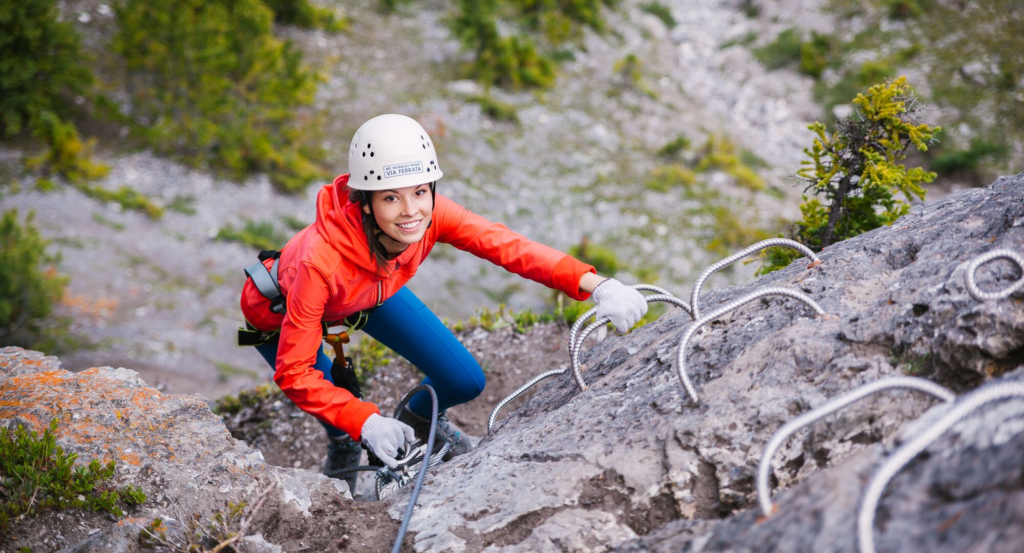
The towering peaks of Banff National Park have long attracted climbers and mountaineers from around the world. Whether you’re scaling the famous Mount Rundle or tackling the more technical routes on Mount Temple, Banff’s climbing opportunities cater to all skill levels. In the winter months, ice climbing becomes a popular activity, with frozen waterfalls like the Weeping Wall offering thrilling challenges for climbers.
3. Winter Sports

Banff National Park transforms into a winter wonderland when the snow begins to fall, offering world-class skiing, snowboarding, and other winter sports. The park is home to three major ski resorts: Banff Sunshine, Lake Louise Ski Resort, and Mt. Norquay. These resorts boast a wide range of terrain, from gentle slopes for beginners to challenging runs for expert skiers and snowboarders.
In addition to downhill skiing, cross-country skiing, snowshoeing, and ice skating are popular winter activities. The frozen lakes and snow-covered trails provide the perfect setting for winter adventurers to explore the park’s pristine beauty.
4. Canoeing, Kayaking, and Rafting

The park’s numerous lakes and rivers offer excellent opportunities for water-based activities, including canoeing, kayaking, and white-water rafting. Canoeing on Lake Louise or Moraine Lake is a peaceful way to soak in the park’s beauty, while those seeking more adventure can head to the Bow River or Kicking Horse River for exhilarating rafting experiences. For a more serene experience, kayaking on the calm waters of Bow Lake is a popular choice.
Banff’s Cultural and Historical Attractions
While Banff National Park is best known for its natural beauty, it also offers a rich cultural and historical experience. The town of Banff itself is a hub of activity, where visitors can explore museums, art galleries, and historic sites.
1. Banff Springs Hotel

The Banff Springs Hotel, often referred to as the “Castle in the Rockies,” is one of Canada’s most iconic landmarks. This luxurious hotel, built by the Canadian Pacific Railway in the late 19th century, offers a glimpse into the opulence of the early days of Banff tourism. Even if you’re not staying at the hotel, a visit to admire its grand architecture and stunning views is well worth the trip.
2. The Cave and Basin National Historic Site

The Cave and Basin National Historic Site is where the history of Banff National Park began. This site, home to the famous hot springs, offers an interactive museum where visitors can learn about the park’s history, the role of the railway, and the significance of the hot springs to Indigenous cultures. The cave itself is a unique natural formation, where the warm mineral waters create an otherworldly atmosphere.
3. The Banff Centre for Arts and Creativity
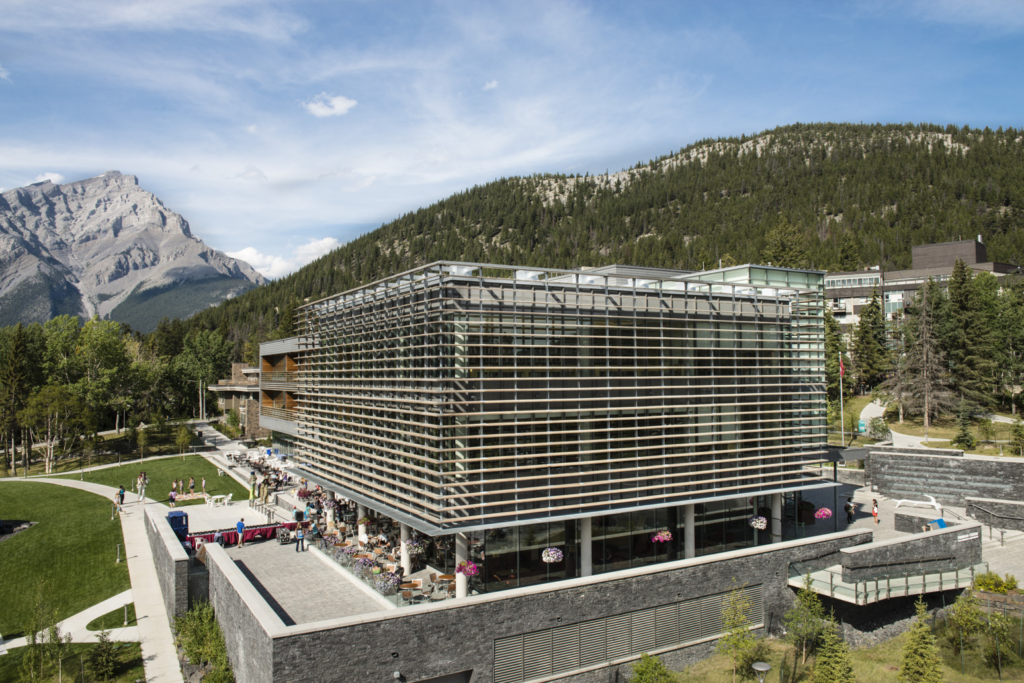
The Banff Centre for Arts and Creativity is a cultural gem in the heart of the park. This world-renowned institution offers performances, exhibitions, and workshops in a variety of artistic disciplines, including music, dance, theater, and visual arts. The center’s stunning location, surrounded by the beauty of the Rockies, provides an inspiring backdrop for artists and audiences alike.
Protecting Banff: Conservation and Sustainability
Banff National Park faces ongoing challenges in balancing the needs of visitors with the preservation of its fragile ecosystems. With millions of people visiting the park each year, the impact of human activity on the environment is a significant concern. To address these issues, Parks Canada has implemented a range of conservation initiatives aimed at minimizing the ecological footprint of tourism.
Efforts to restore damaged habitats, protect wildlife corridors, and manage human-wildlife interactions are just some of the ways the park is working to ensure its long-term sustainability. Visitors are encouraged to follow Leave No Trace principles, stay on designated trails, and respect the park’s wildlife by observing from a distance.
Banff National Park is more than just a destination—it’s an experience that immerses visitors in the majesty of Canada’s wilderness. From its stunning landscapes and diverse wildlife to its rich history and cultural attractions, Banff offers something for everyone. Whether you’re hiking through alpine meadows, skiing down snow-covered slopes, or simply taking in the breathtaking views of a glacier-fed lake, Banff National Park will leave you with memories that last a lifetime. As one of the world’s most iconic national parks, it continues to inspire awe and wonder in all who visit, a testament to the beauty and power of nature.
let’s enjoy few years on earth with peace and happiness….✍🏼🙏

